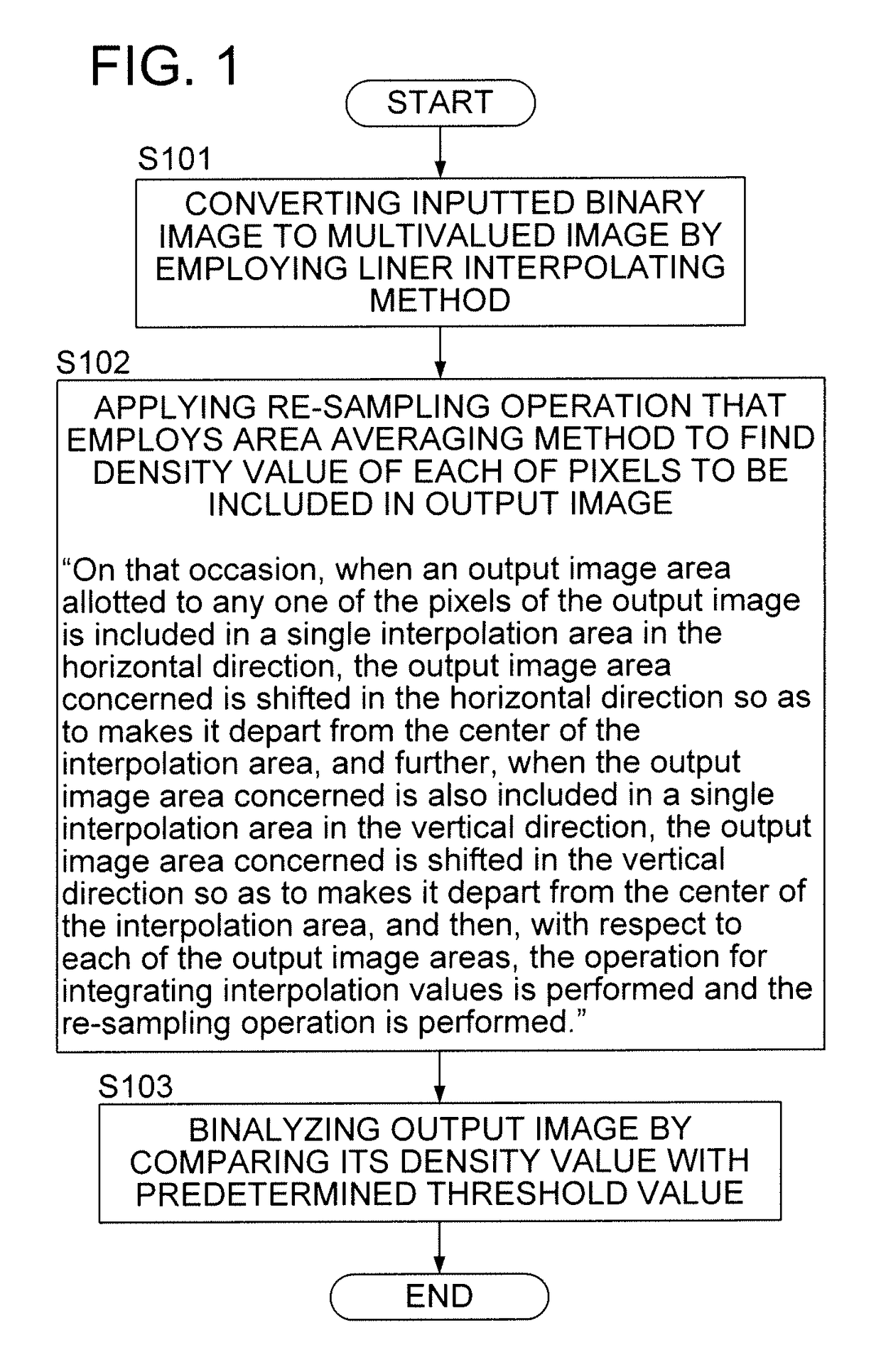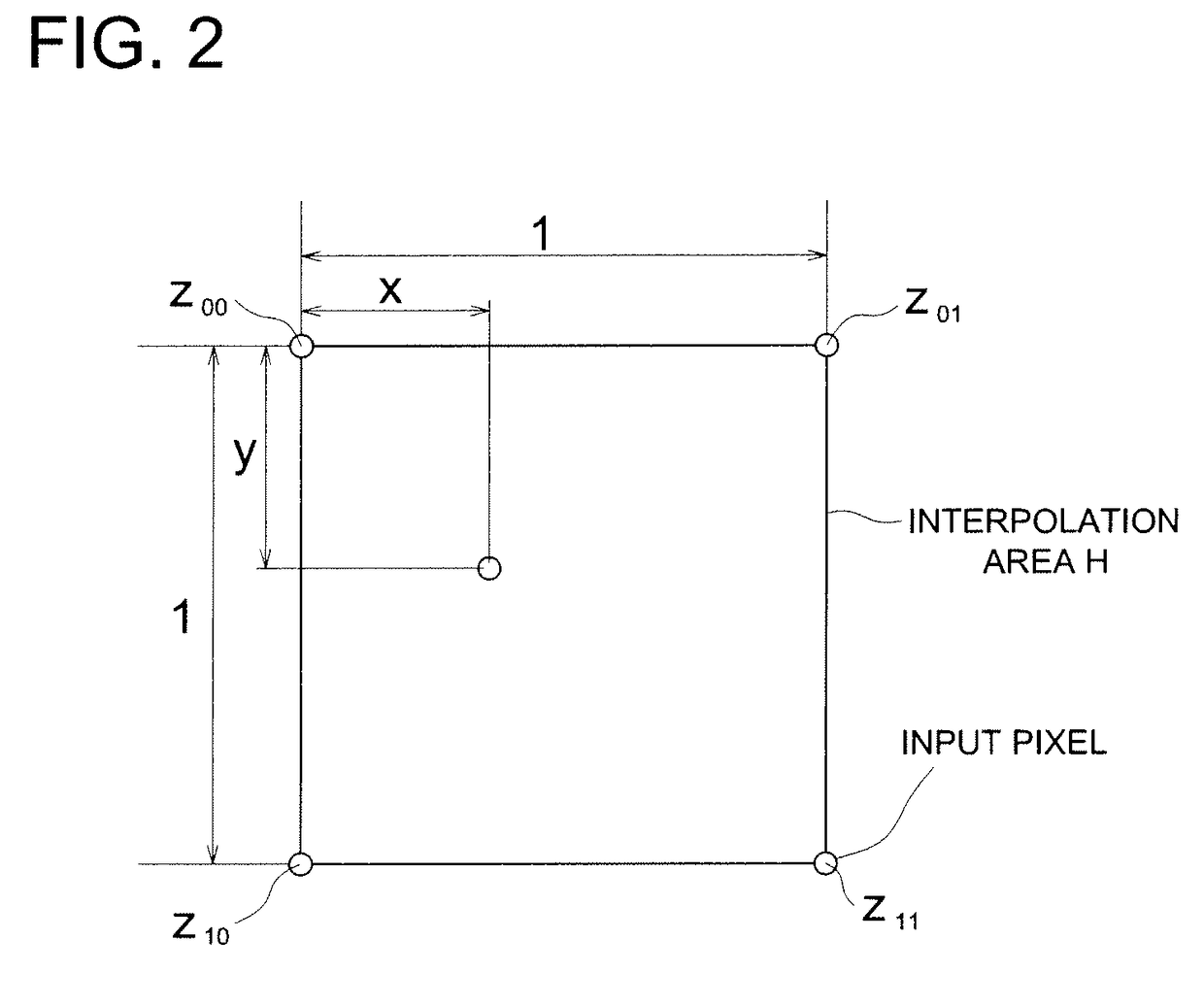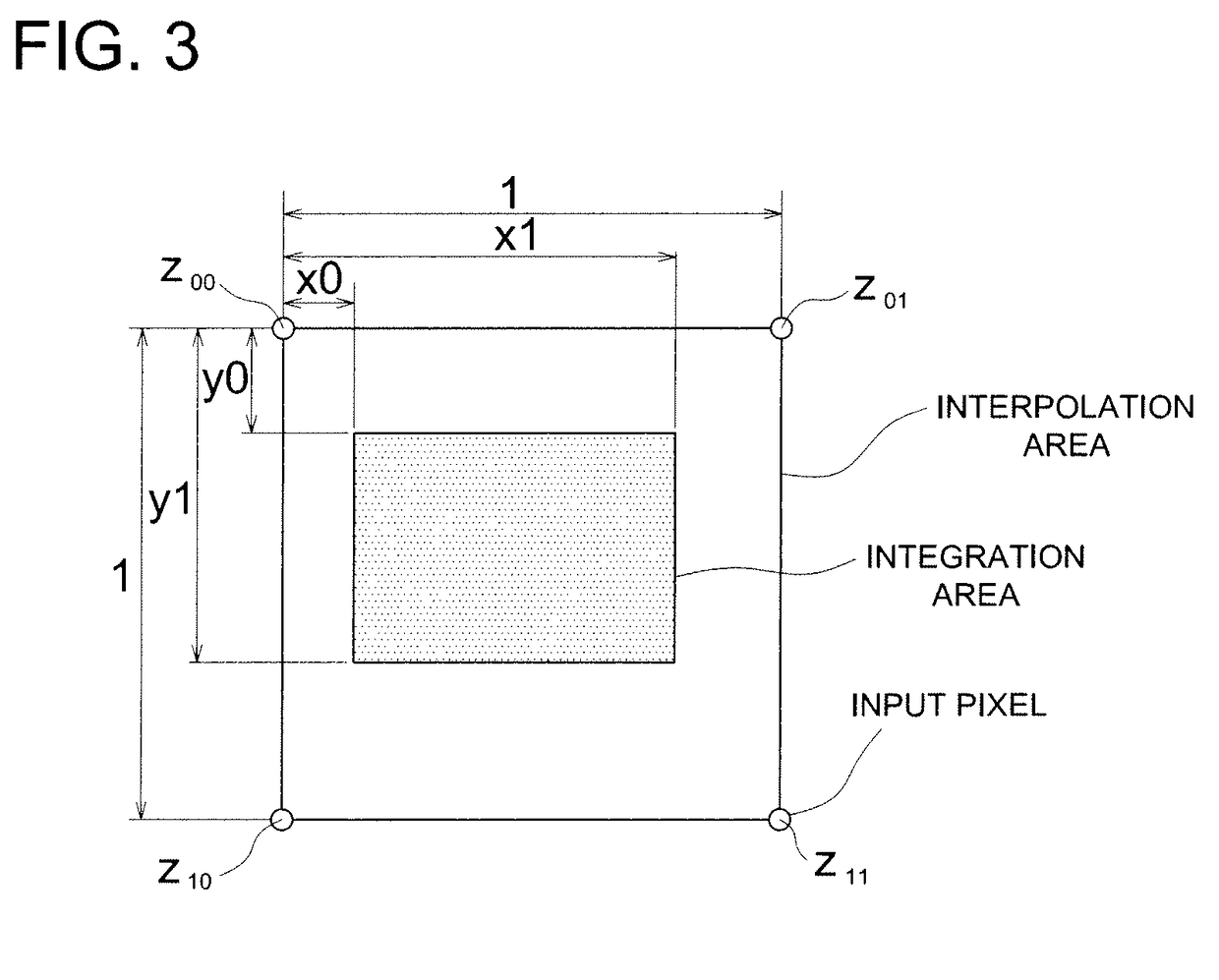Resolution conversion method
a resolution conversion and conversion method technology, applied in the field of resolution conversion methods, can solve the problems of insufficient effect of edge smoothing operation in which high resolution property is effectively utilized, prone to jamming in the reproduced image, and large image size reduction on a scale of one to several, so as to achieve stably reproduce
- Summary
- Abstract
- Description
- Claims
- Application Information
AI Technical Summary
Benefits of technology
Problems solved by technology
Method used
Image
Examples
first embodiment
[0050]FIG. 1 shows a flowchart roughly indicating an overall processing flow of the resolution conversion method embodied in the present invention as the first embodiment. Although the processing flow shown in FIG. 1 is fundamentally the same as that described in the “BACKGROUND OF THE INVENTION” referring to FIG. 15, the processing flow shown in FIG. 1 is different from that indicated in FIG. 15 on the point that, when an output pixel area (pixel area of the output pixel) is included in a single interpolation area with respect to each of the horizontal direction and the vertical direction, an operation for integrating interpolation values is performed after the output pixel area is made to be shifted.
[0051]Initially, a density value (interpolation value) at an arbitral position between pixels of the input image, serving as the inputted binary image represented in the dot-matrix format, is found by employing the liner interpolating method, so as to convert the inputted binary image ...
second embodiment
[0072]Next, second embodiment will be detailed in the following.
[0073]FIG. 8 shows a flowchart roughly indicating an overall processing flow of the resolution conversion method embodied in the present invention as the second embodiment. Although the processing flow shown in FIG. 8 is fundamentally the same as that shown in FIG. 1, the processing flow shown in FIG. 8 is different from that indicated in FIG. 1 on the point that, when the output pixel area crosses over a plurality of input pixel areas P with respect to each of the horizontal direction and the vertical direction, an operation for integrating interpolation values is performed in Step S202 after the output pixel area is made to be shifted so that the concerned output pixel area approaches the center of a single input pixel area P. In this connection, the operation to be performed in Step S201 is the same as that in Step S101, and the operation to be performed in Step S203 is the same as that in Step S103.
[0074]Initially, ...
third embodiment
[0086]Next, the third embodiment will be detailed in the following.
[0087]According to the third embodiment, it becomes possible to cope with the resolution conversion processing, which employs an integer magnification factor, more appropriately than ever. In each of the first and second embodiments, as indicated in the schematic diagram shown in FIG. 17, the input image and the output image are superimposed (corresponded) with each other so as to make the center positions of pixel areas positioned at the four corners of the input image and those of the output image respectively coincide with each other. If the high-resolution conversion processing, which employs an integer magnification factor, is applied to the input image in the abovementioned mode, and for instance, if the integer magnification factor is set at two times of the input image, the phase relationships shown in FIG. 19 emerge all over the output image, resulting in a tendency to generate the thickness instability (or ...
PUM
 Login to View More
Login to View More Abstract
Description
Claims
Application Information
 Login to View More
Login to View More - R&D
- Intellectual Property
- Life Sciences
- Materials
- Tech Scout
- Unparalleled Data Quality
- Higher Quality Content
- 60% Fewer Hallucinations
Browse by: Latest US Patents, China's latest patents, Technical Efficacy Thesaurus, Application Domain, Technology Topic, Popular Technical Reports.
© 2025 PatSnap. All rights reserved.Legal|Privacy policy|Modern Slavery Act Transparency Statement|Sitemap|About US| Contact US: help@patsnap.com



